A variety of insects and other invertebrates take refuge under logs and stones, safe from large predators, or damaging frosts in winter. Turn over a log briefly, or peep under the flaps of peeling bark, and you’ll reveal a menagerie.Logs and stones provide a safe refuge in winter, where temperatures are fairly stable – only in very cold weather will ice form underneath logs. In their winter torpor, large ground beetles don’t feed; instead, they will snuggle up to slugs and earthworms without attacking.
Similarly, you’ll sometimes see mollusc-munching carrion beetles alongside snails and pearly slug’s eggs. If you’re lucky you’ll spot the buzzing snail-hunter, with a long, narrow snout adapted to probe the recesses of snail shells and extract the soft bodies.
To avoid their attentions, many snails will be sealed safely behind a door of hardened mucus. In a mild spell slugs may emerge to graze, but when frosts bite most take cover, along with millipedes and woodlice, snug in their deadwood dormitory.
All illustrations by Felicity Rose Cole, unless otherwise stated.
How to identify insects and invertebrates under logs and stones
Violet ground beetle (Carabus violaceus, above)
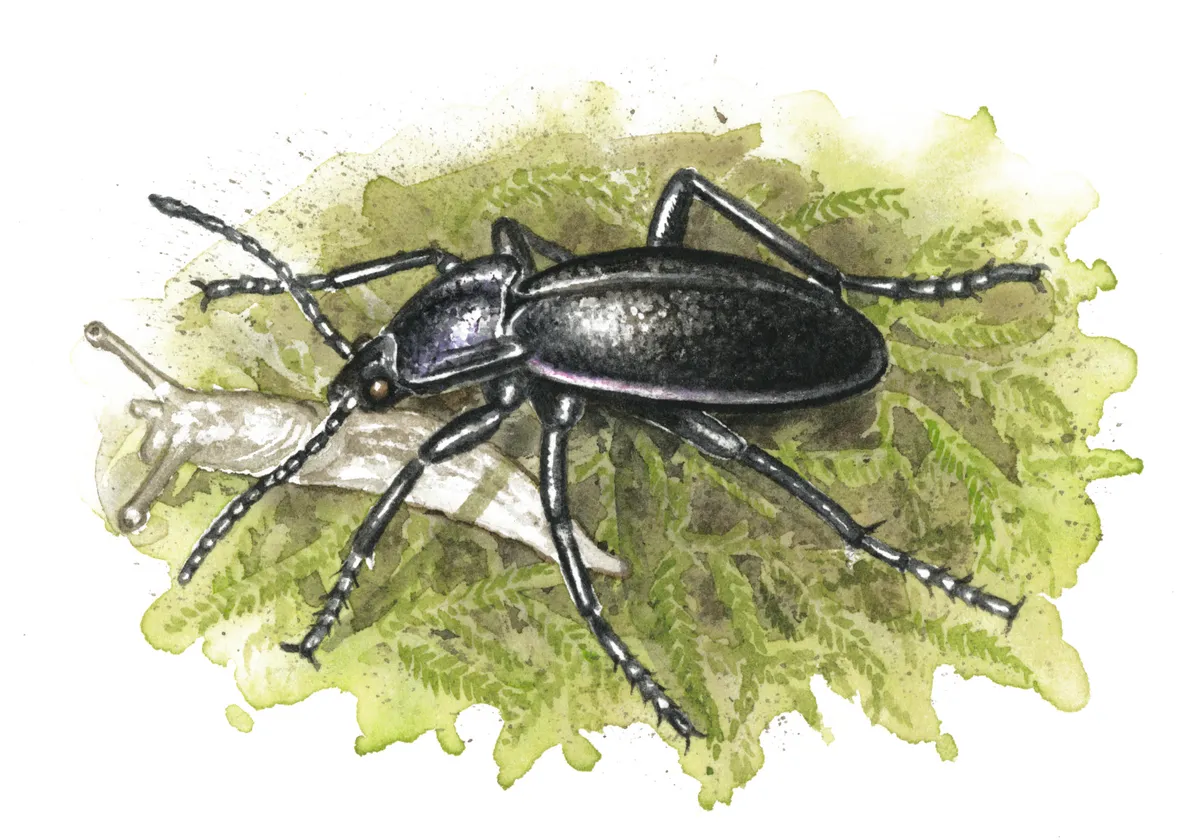
At dusk, the violet ground beetle emerges from its hiding place under a rock or log (patios and timber decking are also ideal) to seize soft-bodied invertebrates such as slugs and worms. This blackish beetle measures between 20-30mm long, with a violet or bluish edging to its head and wing-cases. It’s a handy organic pest controller – every gardener should welcome it with open arms.
Woodlouse spider (Dysdera crocata)

After dark, your patio can become a miniature Serengeti, stalked by hunters as fearsome as any lion or leopard. Scale, of course, is everything, so pity the woodlouse that bumps into a woodlouse spider. This nocturnal arachnid measures between 9-15mm long and is instantly recognisable by its huge orange chelicerae (fangs), which are strong enough to pierce the armour of its favourite prey. They can puncture human skin, too. The species is found most frequently in southern England.
Buzzing snail-hunter (Cychrus caraboides)
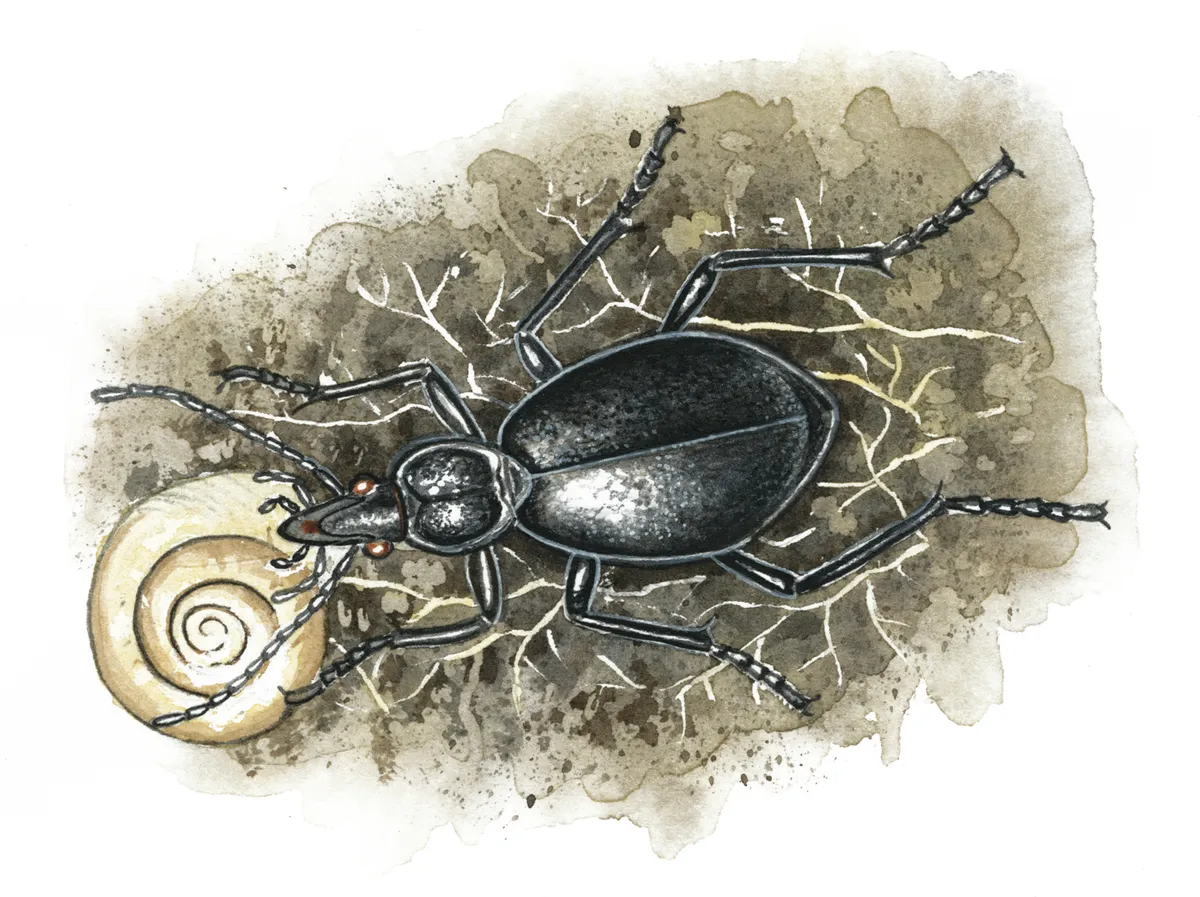
15–20mm. Long ‘snout’ probes snail shells. Also eats wide range of soft-bodied prey. Buzzes when handled.
Ground beetle (Abax parallelepipedus)
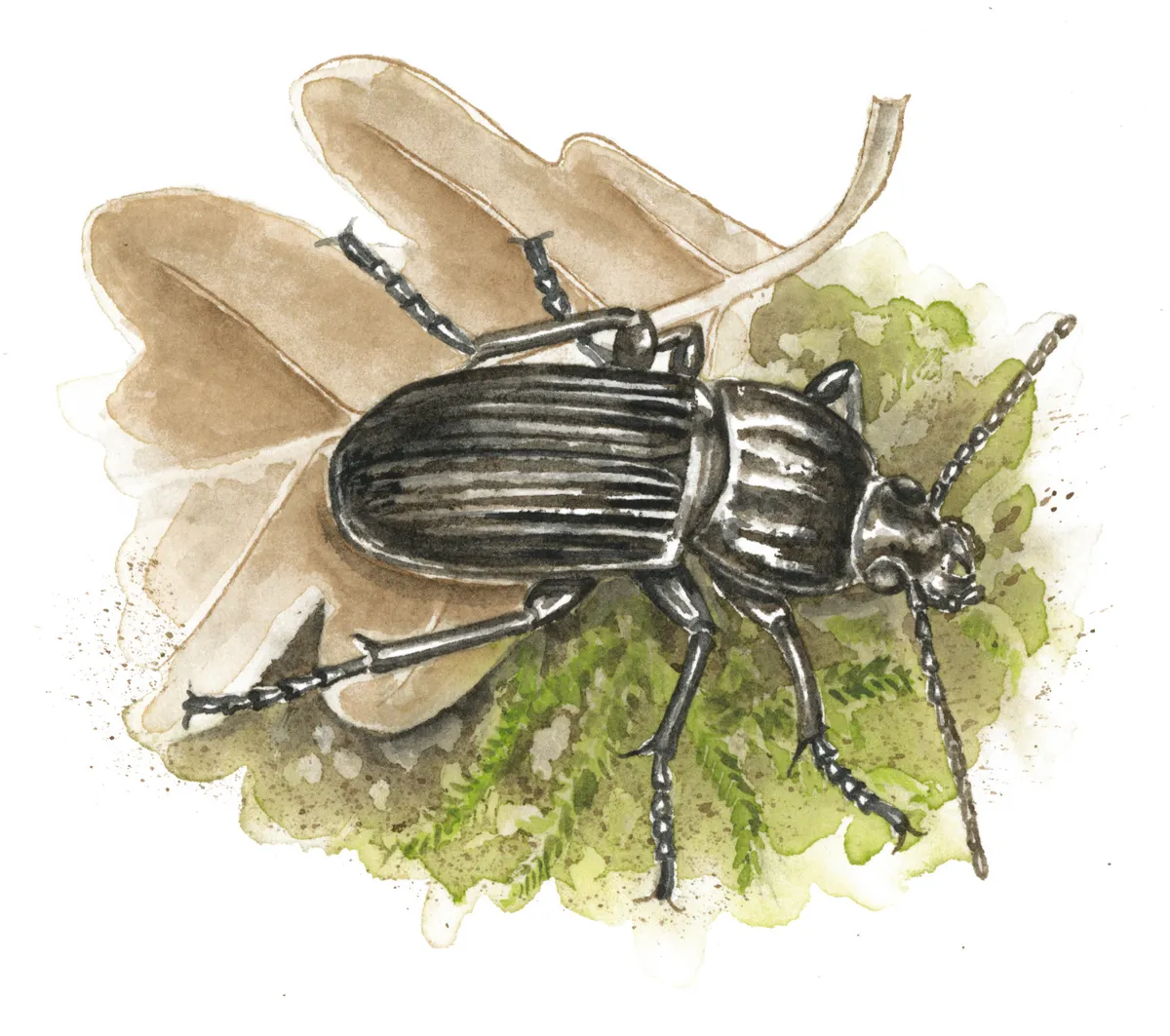
17–22mm. Black beetle with grooved wingcases. Eats earthworms and other soft-bodied invertebrates.
Carrion beetle (Silpha atrata)
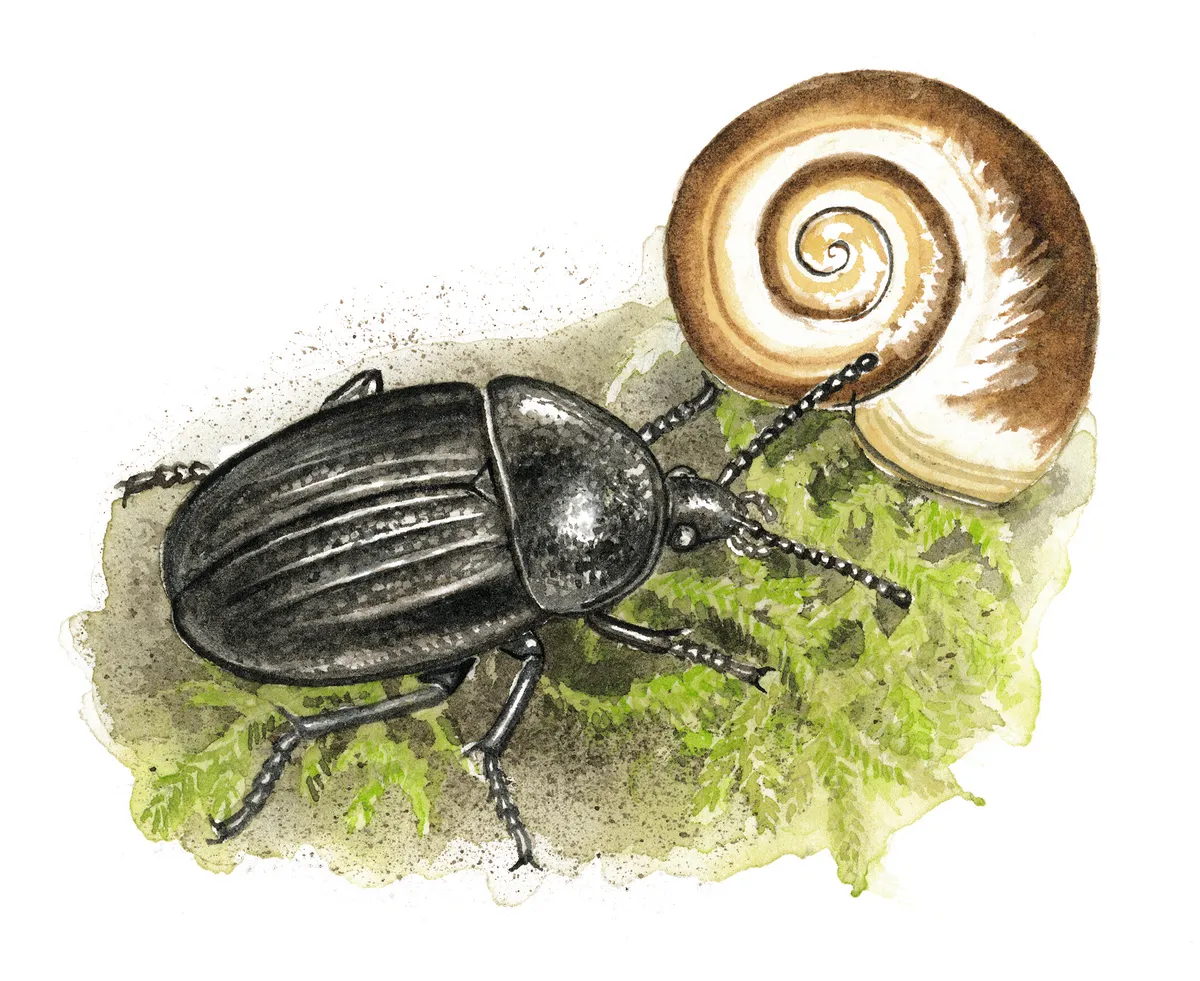
10–15mm. Mat-black beetle with broad wingcases. Feeds on snails and a wide variety of carrion.
Devil’s coach-horse (Ocypus olens)

20–30mm. Black rove beetle with short wingcases. Raises tail when threatened. Eats slugs.
Common black millipede (Tachypodoiulus niger)
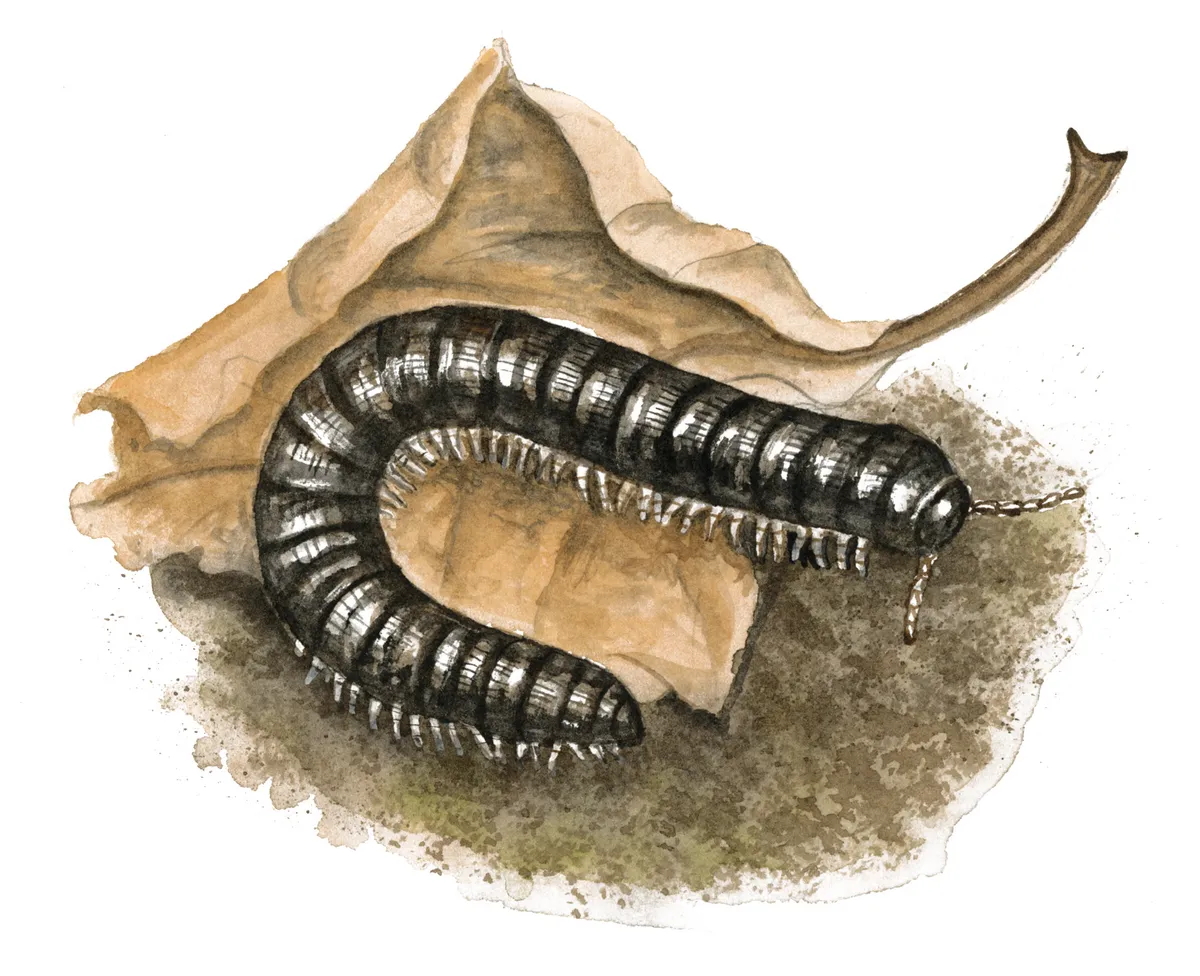
Up to 30mm. Coils when disturbed. Body has 30–60 segments. Feeds on decaying matter and fungi.
Flat-backed millipede (Polydesmus angustus)

Up to 25mm. Brownish, winged segments; appears flatter than black millipede. Often found under bark.
Common centipede (Lithobius forficatus)

At 30mm in length, the common centipede is a largest and obvious invertebrate predator. It hunts at night, seeking out a wide range of soft-bodied prey, which it stabs with its venomous fangs. Despite the name, this species doesn’t have 100 legs – just 15 pairs, one on each shiny, chestnut-coloured body segment. The longest, at the rear, double up as sensitive feelers.
Common pill woodlouse (Armadillidium vulgare)
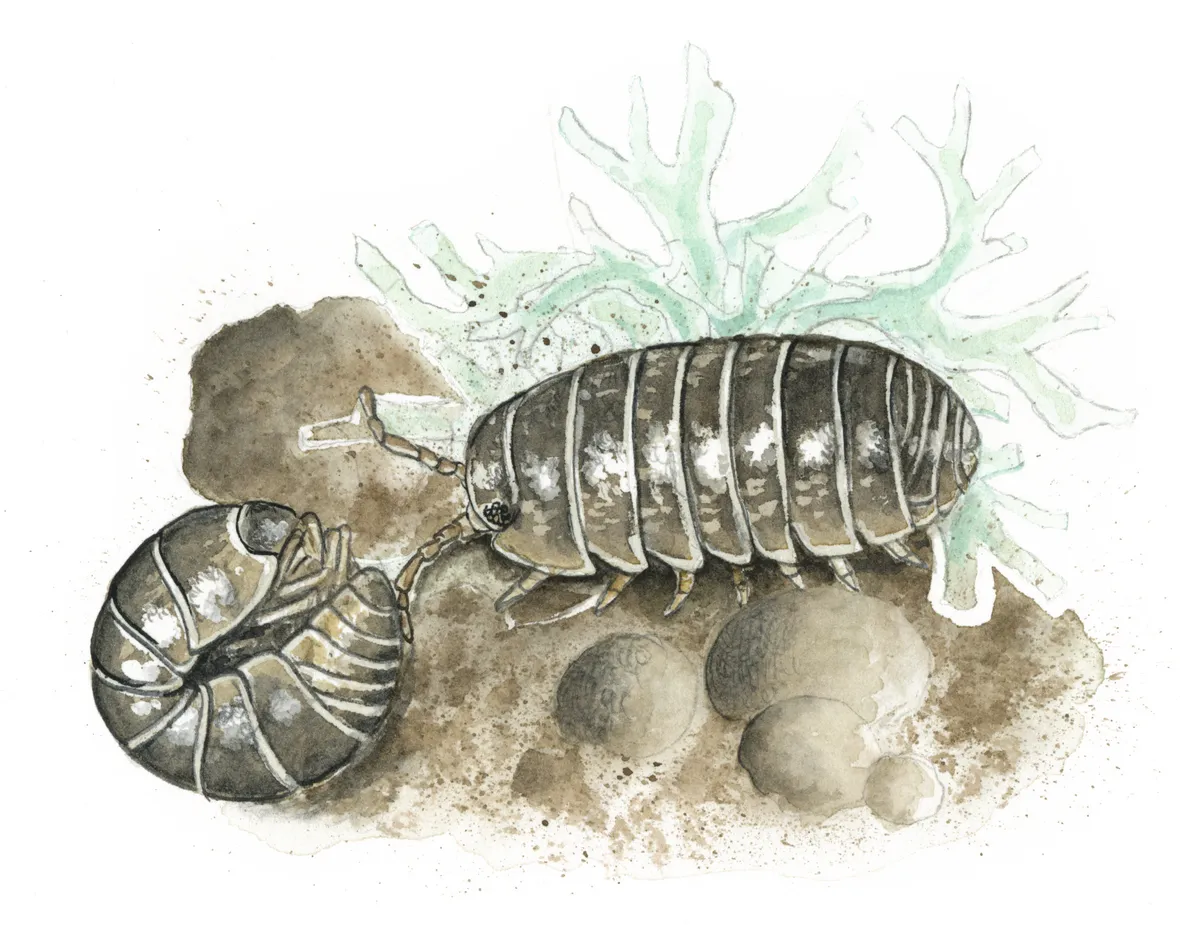
Up to 18mm. Found especially on limy soils. Similar pill millipede has more than seven pairs of legs.
Common striped woodlouse (Philoscia muscorum)
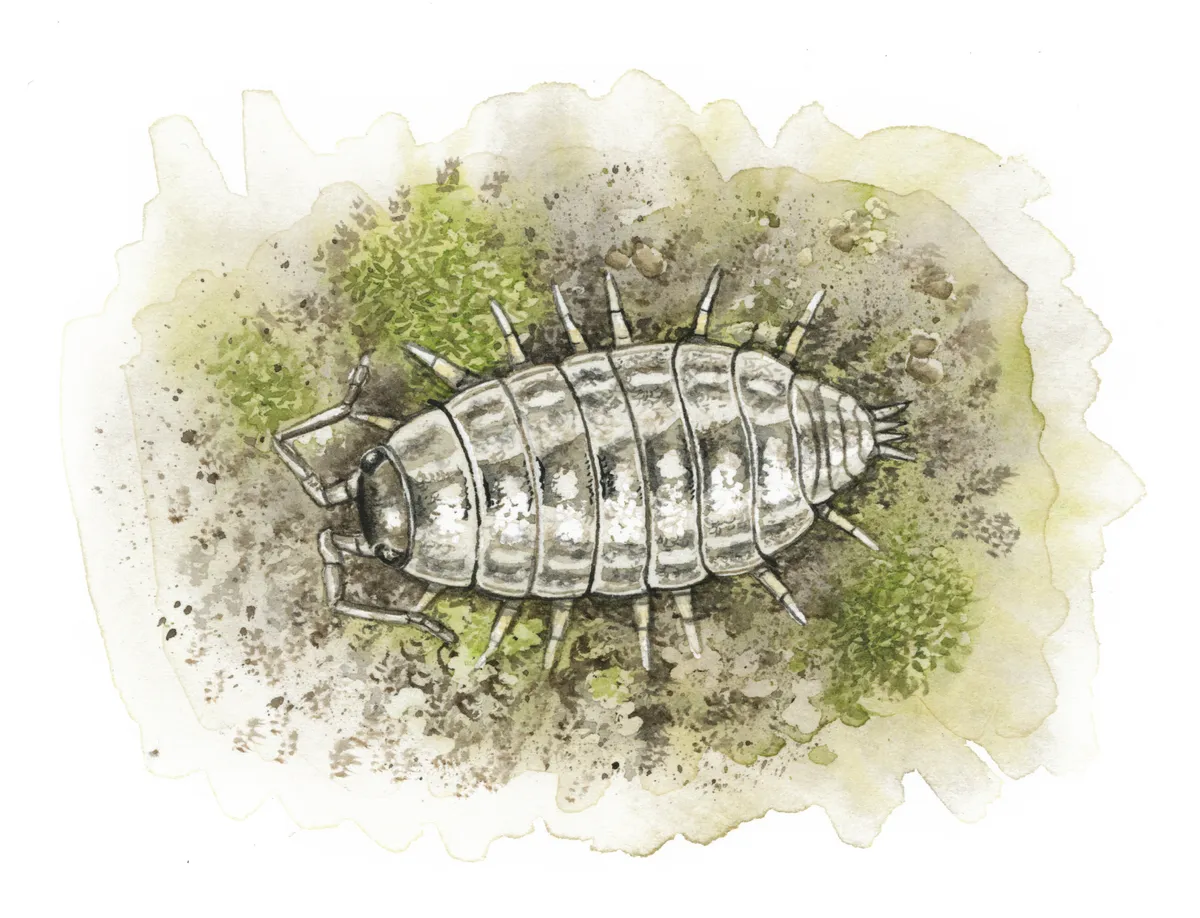
Up to 11mm. Fast-moving. Grey, brown or even orange, often with dark stripe.
Garlic snail (Oxychilus alliarius)

6–8mm. Translucent, shiny, pale-brown shell, dark grey body. Emits strong garlic smell when disturbed.
Great grey slug (Limax maximus)
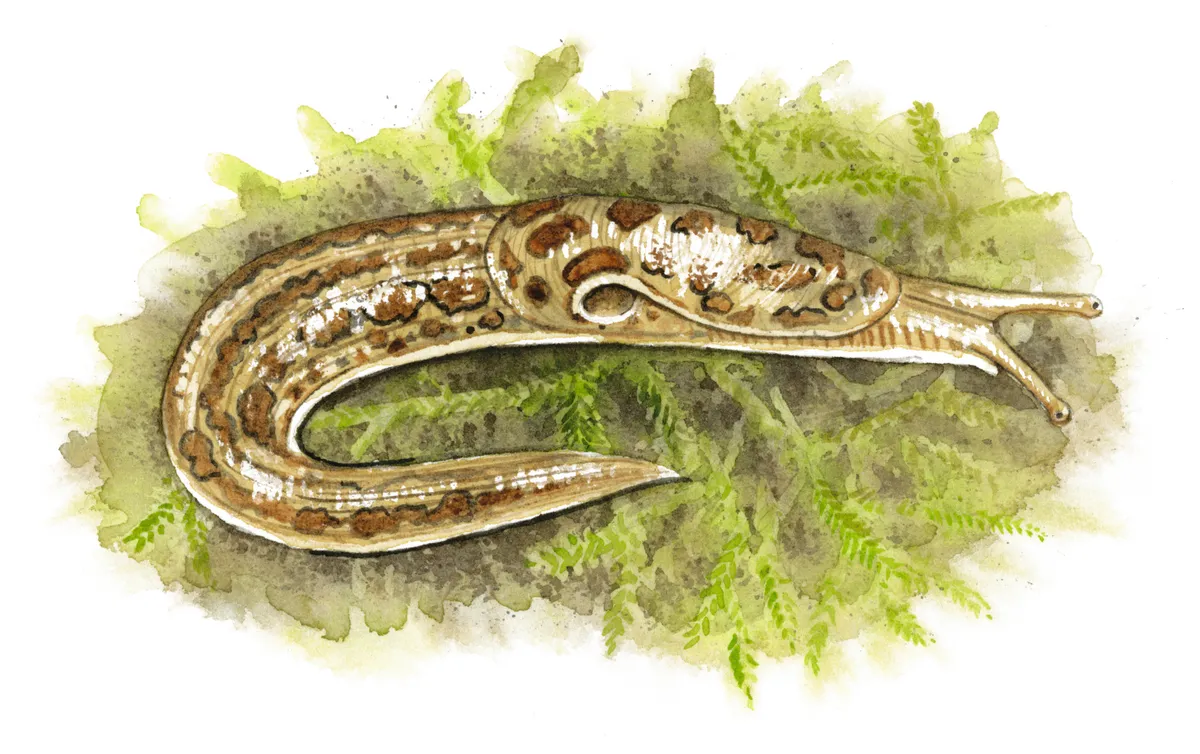
Very large slug, up to 20cm. Body dark grey, with paler blotches and stripes – hence alternative name of leopard slug.